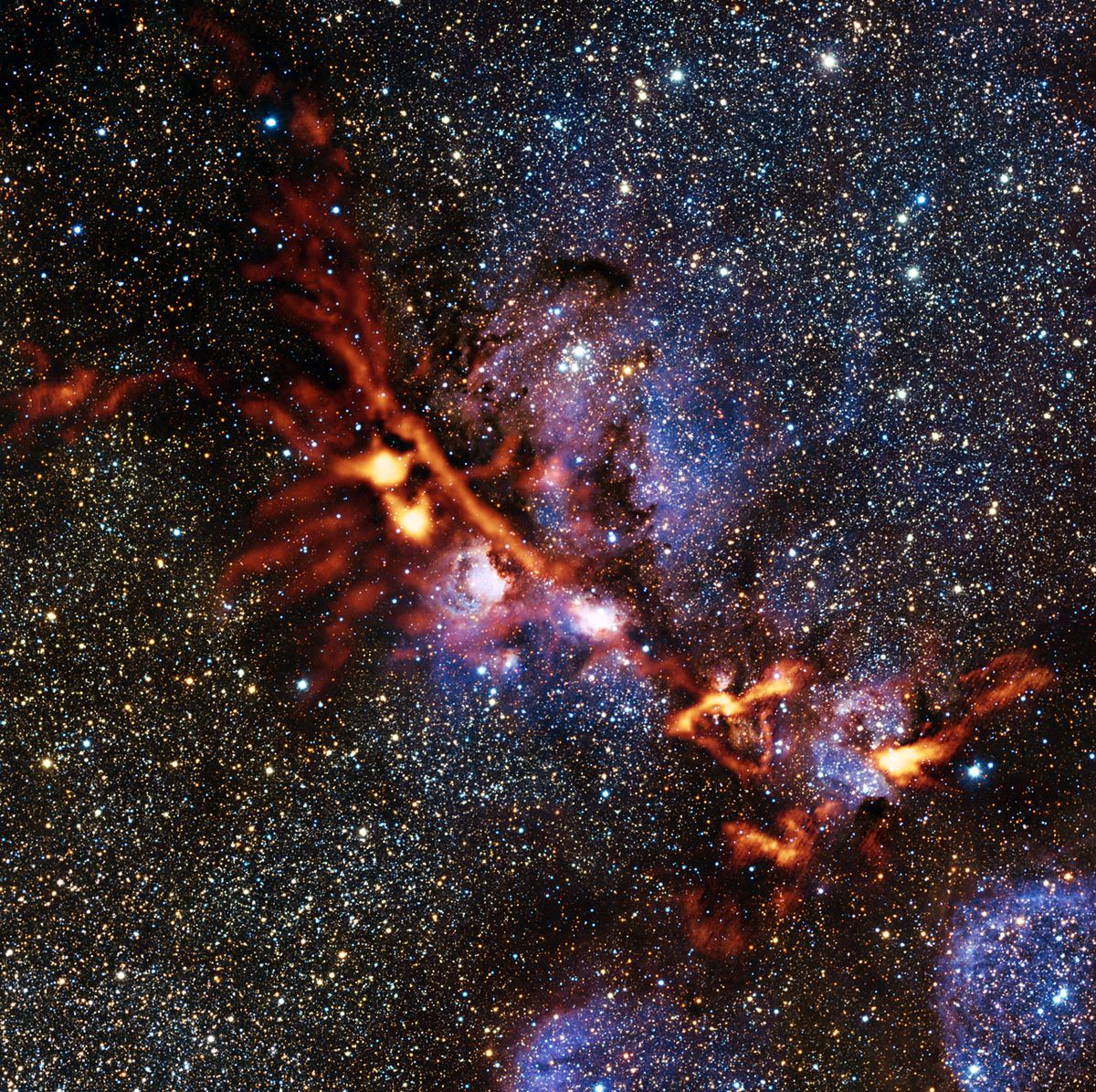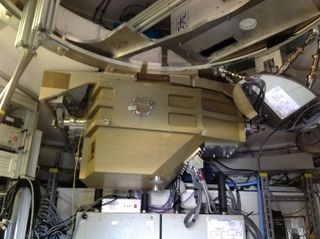Amazing Cat's Paw Nebula View Captured by New Space Camera (Photo)

A new camera on a telescope in the Southern Hemisphere has captured a stunning view of the Cat's Paw Nebula, offering a colorful and detailed view of a star-forming region of the Milky Way.
Released by the European Southern Observatory, the new photo of the Cat's Paw Nebula located about 5,500 light-years from Earth is one of the first shots taken by ArTeMiS — a submillimeter-wavelength camera added to APEX, the Atacama Pathfinder Experiment in Chile. ESO officials also produced a video fly-through of the incredible Cat's Paw Nebula view using the new camera observations.
The new instrument is expected to help scientists create more detailed wide-field maps of the sky in a shorter amount of time, ESO officials said in an image description. But the installation of the new hardware was no cakewalk. [Gallery: Strange Nebula Shapes, What Do You See?]

"The commissioning team that installed ArTeMiS had to battle against extreme weather conditions to complete the task," ESO officials wrote. "Very heavy snow on the Chajnantor Plateau had almost buried the APEX control building."
The staff had to use an improvised road in order to transport and install the instrument in its proper locations.
The research team also battled the weather when it came time to observe using ArTeMiS. The light observed by the camera is absorbed by water vapor in Earth's atmosphere, according to ESO officials. Because of this, the scientists had to wait for dry weather before testing out the instrument.

Since its initial commissioning, researchers have used ArTeMiS for scientific projects including one that produced the new photo of the Cat's Paw Nebula. "This new ArTeMiS image is significantly better than earlier APEX images of the same region," according to ESO officials.
Sign up for the Live Science daily newsletter now
Get the world’s most fascinating discoveries delivered straight to your inbox.
The Cat's Paw Nebula plays host to tens of thousands of new stars and houses about 200,000 suns' worth of material needed for star formation.
A study released earlier this year suggests that the nebula might be going through a stellar "baby boom." Stars in the Cat's Paw Nebula are forming at a more rapid pace than the Orion Nebula, making it one of the most productive star forming regions in the galaxy. The new research found that the nebula could be going through a period of rapid star formation.
"It might resemble a 'mini-starburst,' similar to a scaled-down version of the spectacular bursts sometimes seen in other galaxies," the study's lead author Sarah Willis of the Harvard-Smithsonian Center for Astrophysics and Iowa State University said in a statement released in June.
The European Southern Observatory is an intergovernmental astronomy organization supported by 15 different countries in Europe and South America.
Follow Miriam Kramer @mirikramer and Google+. Follow us @Spacedotcom, Facebook and Google+. Original article on SPACE.com.












